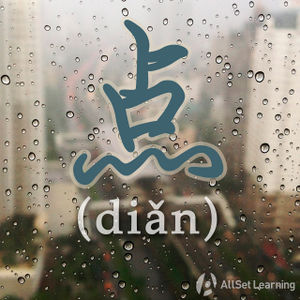Structure of times (basic)
-
Level
-
Similar to
-
Used for
-
Keywords
Time in Chinese, just like in English, is expressed by stating the hour first, and then the minute (big to small).
Contents
On the Hour
The time of day in Chinese is formed with a number 1 to 12 (一 (yī) to 十二 (shí'èr)) followed by 点 (diăn). This 点 (diăn) is equivalent to o'clock in English. In China, people generally use a twelve-hour clock, preceded by 上午 (shàngwŭ) for "a.m." or 下午 (xiàwŭ) for "p.m." when necessary.
Structure
(Date and/or time of day +) x 点
Sometimes people use the longer 点钟 (diǎnzhōng) instead of just 点 (diǎn), but you're fine using the short form.
Examples
If you want to include more specific information, start with the day or date, followed by the general time of day, with the exact clock time last. (This is the big-to-small pattern.) This is how Chinese gets around the need for "a.m." or "p.m.": use 上午 (shàngwǔ) for times in the morning, and 下午 (xiàwǔ) for times in the afternoon.
- 九 点9 o'clock
- 上午 七 点7 o'clock a.m.
- 下午 四 点4 o'clock p.m.
- 中午 十二 点 12 o'clock noon
- 明天 晚上 七 点7 o'clock p.m. tomorrow evening
- 9 月 9 号 早上 六 点September 9th, 6 o'clock a.m.
- 星期三 上午 九 点Wednesday at 9 o'clock a.m.
Note that two o'clock is 两点 (liǎng diǎn), not 二点 (èr diǎn). (For more information on when to use 两 (liǎng) vs. 二 (èr), see our article on comparing "er" and "liang").
"Twelve o'clock," however, is still 十二点 (shí'èr diǎn).
Half Hours
Half hours are added after 点 (diăn) and are indicated with 半 (bàn).
Structure
x 点 + 半
Examples
- 五 点 半5:30
- 下午 两 点 半2:30 p.m.
- 星期天 上午 十 点 半 Sunday at 10:30 a.m.
- 昨天 晚上 七 点 半7:30 yesterday evening
- 今天 下午 四 点 半4:30 p.m. this afternoon.
As a beginner, that should be all you need. If you've mastered all of these structures and want to get a little more advanced, see structure of times (advanced).
HSK Notes
Simple times with 点 (diăn) is on HSK1, but the usage above with 半 (bàn) is not. It is not tested until HSK3.
See also
Sources and further reading
Books
- HSK Standard Course 1 (pp. 84) Anything Goes (无所不谈) →buy
- HSK Standard Course 3 (pp. 59) Anything Goes (无所不谈) →buy
- Integrated Chinese: Level 1, Part 1 (3rd ed) (pp. 74-5) Anything Goes (无所不谈) →buy
- New Practical Chinese Reader 1 (新实用汉语课本1) (pp. 160) Anything Goes (无所不谈) →buy
- New Practical Chinese Reader 1 (新实用汉语课本1)(2nd ed) (pp. 185) Anything Goes (无所不谈) →buy



